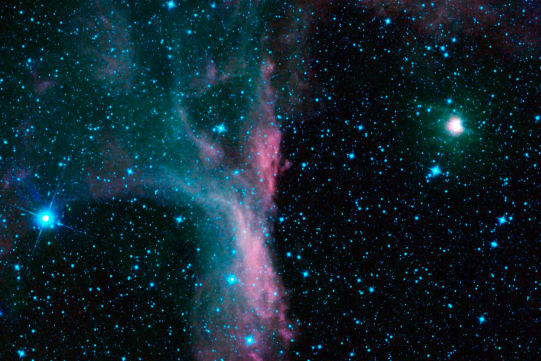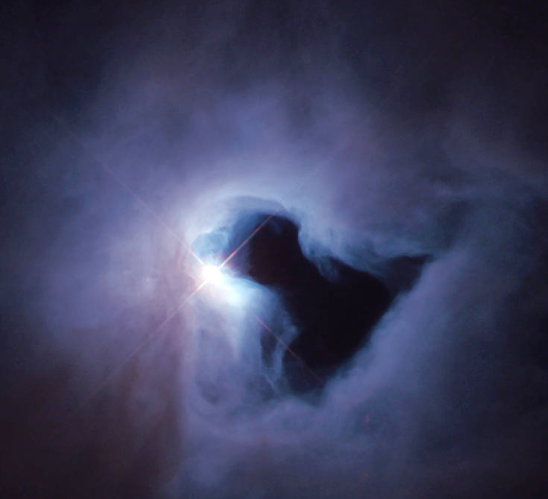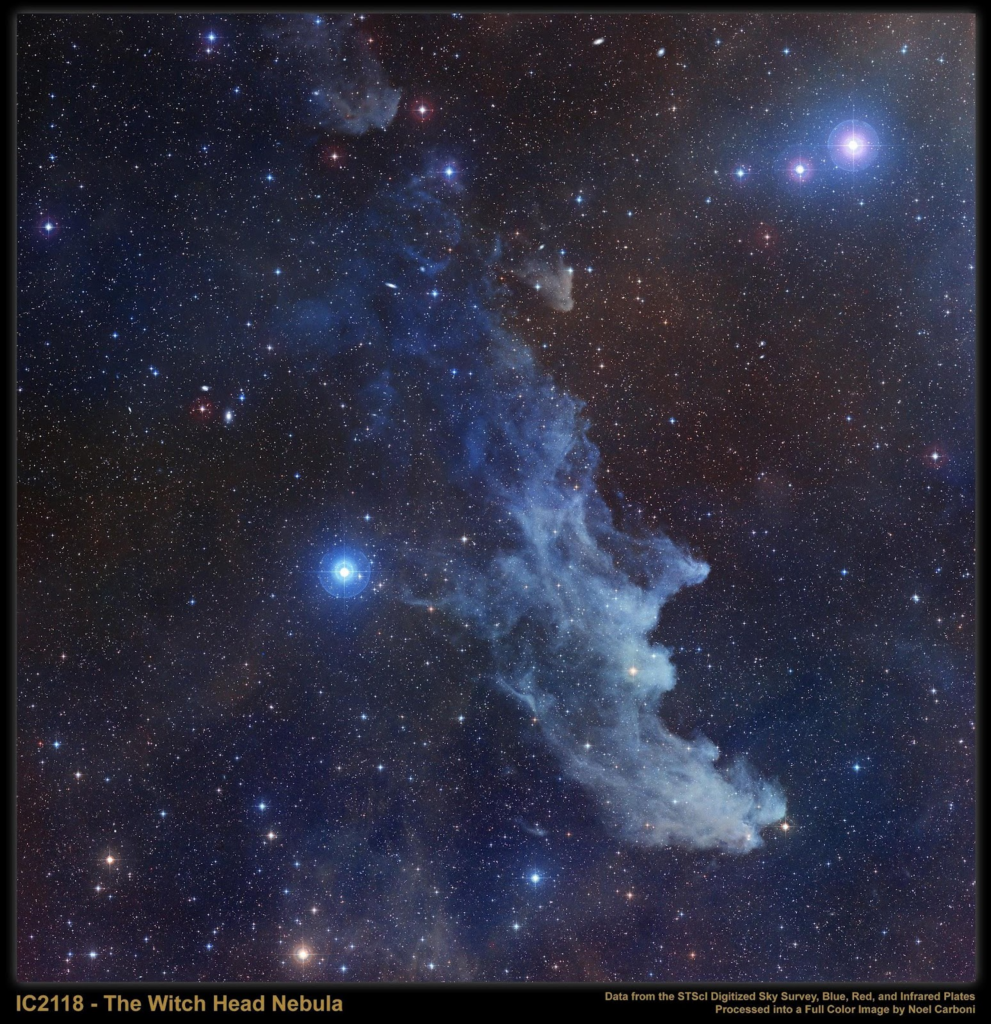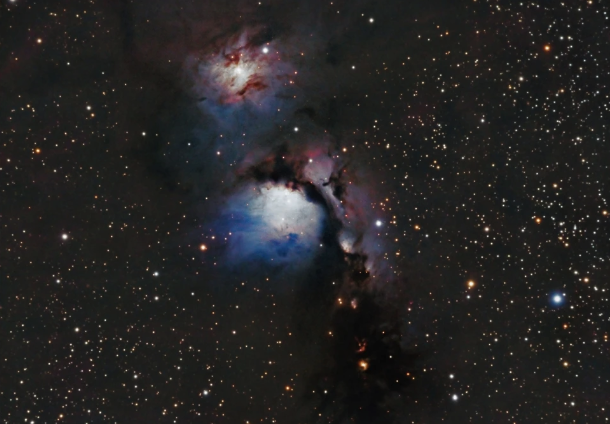Reflection Nebula- The Brilliant Blues and the Ravishing Reds
Reflection Nebula are gigantic clouds of dust and gas in the vast openness of space between stars. A reflection nebula doesn’t produce light; instead, it reflects the light of nearby stars. Nebulae are highly photogenic, so you’ve likely seen pictures of them even if you didn’t realize it.
The Latin word nebula means cloudy or misty. Nebula was a medical term in the 1300s referring to urine cloudiness or an eye film causing blurriness and vision problems. In the 1600s, astronomers began using the word to describe interstellar gas and dust clouds.

Table of Contents
What Is a Nebula?
Interstellar space holds some fascinating objects. Nebulae are a few of them. These vast, cold clouds consist of dust and ionized gasses like hydrogen and helium. Sometimes the clouds form in the chaotic aftermath of supernovas (a dying star’s explosion.) Other nebulae act as star nurseries, becoming the region where new stars are born.
In 964, a Persian astronomer noted “a little cloud” near the Andromeda Galaxy. That’s when Abd al-Rahman al-Sufi made the first reference to what scientists later called a nebula.
In 1610, Nicolas-Claude Fabri de Pieresc discovered the Orion Nebula. However, it wasn’t until later in the century that astronomers detailed their observations of nebulae.
Edwin Hubble helped develop classifications of nebulae based on the light spectra they produce. He also recognized and documented their association with and illumination by nearby stars.
Reflection Nebulae Characteristics
Because of their many similarities, it is sometimes difficult to tell the difference between galaxies, star clusters, and nebulae. Advanced telescopes, like the Hubble, take amazing images of nebulae, so we can continue learning more about them.
Reflection Nebula Colors
A reflection nebula is born when a nearby star’s light reflects off a dust and gas cloud. The scattered light has a color spectrum similar to the star but bluer. The blueness comes from the slight polarization. For example, the cloud’s typical dust particle size is close to blue light’s wavelength, so the blue color deepens.
Like the Earth’s sky, the dust particles reflect blue light most efficiently. As a result, we only see redder colors in the sky during sunrise and sunset. That’s when the light path through the atmosphere is longer. This is because the red light penetrates the atmosphere more deeply, while the blue light scatters and dissipates.
What is the Difference between Emission and Reflection Nebulae?
Emission nebulae emit light from within themselves when high-energy photons from nearby stars ionize and “light up” the cloud’s gases. These nebulae are some of the interstellar space’s most colorful items.
The surrounding stars are not hot enough to excite or ionize the cloud’s hydrogen atoms in reflection nebulae. Instead, the cosmic dust cloud becomes visible by reflecting starlight rather than emitting its own.

Think of it like a ray of sunshine on a spider’s web. You know it’s there, but you can’t see it very well. When the morning sun hits the web just right, the tiny strings reflect the light, and the whole web brightens and glistens.
When thinking of reflection nebulae, you might also think about fog around a streetlight. The minuscule water droplets capture and reflect the light source, creating a warm glow.
Reflection Nebula Size
Scientists measure the size of a reflection nebula not by the dust cloud size but by its illumination source. They measure the area around the detection point where brightness remains.
Reflection Nebula Examples
For the best viewing, take a trip to a dark-sky site. For example, Utah’s deserts hold many areas where the night sky comes alive. Using a camera with a long exposure also aids in capturing more details of these reflection nebula examples.
Orion
The Orion Constellation, Messier 42, is bright enough to see with your naked eye during the Northern hemisphere’s colder months. It is easiest to see between November and February. Summer months hold the best viewing periods in the Southern hemisphere.
Stemming from Greek mythology, Orion is a sword and shield-wielding hunter and warrior. You’ll most likely see him traveling across the winter sky. Look in the “Sword” of the Orion Constellation at three smaller stars south of Orion’s belt. At first, you’ll only see the stars, but then slowly notice their light reflecting off the Orion Nebula.
You can see this glowing cosmic dust cloud with your bare eyes, but it comes to life with a telescope and extended exposure camera image. Quickly view the reflection nebula’s bright core through a telescope lens.
The Orion Nebula is an active star nursery, the most active one within the Milky Way. Its bright reds and blues give its deep-sky images spectacular appeal to backyard astronomers and NASA scientists alike.
Pleiades
The Pleiades star cluster resides in the Taurus Constellation. See it best in the Northern hemisphere during the Fall and Winter months. The Seven Sisters are the dominant stars in this region, best viewed from a dark-sky location.
You can see these beauties with your naked eye, so look for the hazy blue light of the reflection nebulae around this star cluster. For the best views, use your telescope and camera’s long exposure. However, with a good pair of binoculars, you’ll still capture the brilliant blues reflecting off this cosmic dust and gas cloud.
Witch Head
Find the Witch Head Nebula in the Orion Constellation, where its official designation is IC 2118. Scientists believe this reflection nebula originated from an ancient supernova. The nebula got its name from its distinctive shape and even looks like it has a pointy chin with a long face. Look closely to glimpse the pointed and warty nose!

Lying about 1,000 light-years from Earth, the Witch Head is associated with the brightest star in the Orion constellation, Rigel. So point your telescope or long-range camera towards the constellation before locating Rigel at the bottom right of Orion’s belt. Then the nebula appears faint but viewable.
Messier 78
Messier 78 is another reflection nebula within the Orion Constellation. This deep-sky area is popular with backyard astronomers since it is the closest to Earth. Unofficially, Messier 78 has a nickname of Casper, the Friendly Ghost.
Its light comes from a young star nursery that shines its bright blue light across the dust and gas cloud. So first, find the three stars in Orion’s belt, then search for the hazy light patch northwest of the left star to see Messier 78.
Dark skies are essential for capturing the best images of this reflection nebula. So pack up your telescope gear and head away from light pollution.

Conclusion
Dark-sky areas provide the best viewing spaces for reflection nebulae, but your backyard can work, too! These cold, cloudy groups of dust and gas soak up light from nearby stars. Then they reflect hues of blue and red out to the universe.
Capturing reflection nebula images is one of backyard astronomers’ most rewarding deep-sky activities. So head away from light-polluted cities and let the night sky speak.
